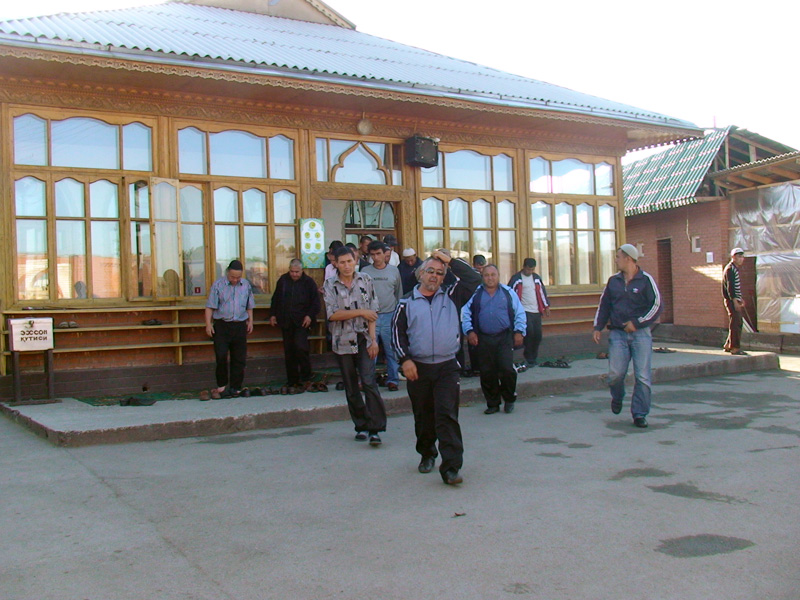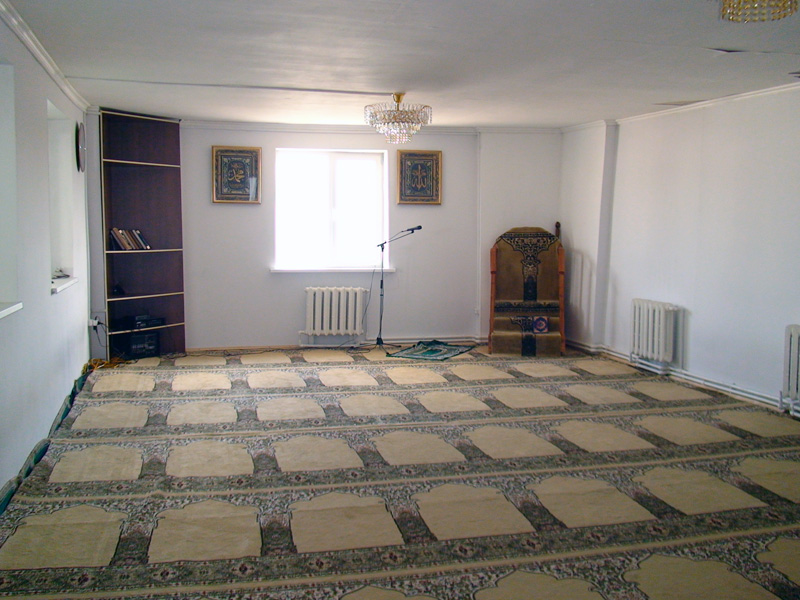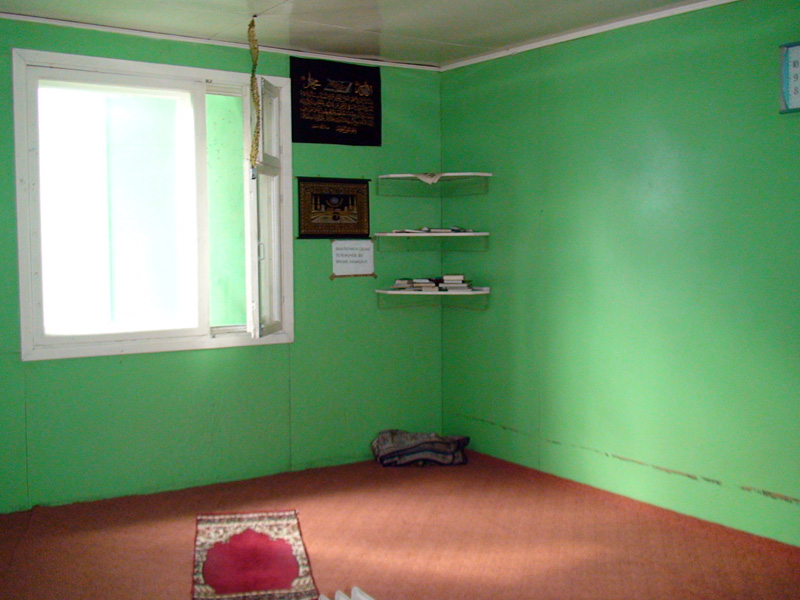“Islamic factor” in russian migration policy
People pray during Kurban-Ait, also known
as Eid al-Adha in Arabic, on a street outside a
mosque in central Moscow
In
Login if you are already registered
(no votes) |
(0 votes) |
Even a few years back while specialists in Islamic studies, ethnologists, demographers and other scholars dealing with the problems of Central Asia were talking about the correlation between the “Islamic factor” and labor migration in Russia, practitioners, officers of the Russian Federal Migration Service (FMS) for example, shrugged their shoulders and asked: “What’s the connection between the way a Moscow yard cleaner is sweeping the courtyard and his religious faith?”
Yet today we have come to understand that migration and Islam are closely inter-connected, and if one disregards this connection in the context of unfavorable demographic prospects in Russia, we can face serious problems which Europe has already encountered.
Even a few years back while specialists in Islamic studies, ethnologists, demographers and other scholars dealing with the problems of Central Asia were talking about the correlation between the “Islamic factor” and labor migration in Russia, practitioners, officers of the Russian Federal Migration Service (FMS) for example, shrugged their shoulders and asked: “What’s the connection between the way a Moscow yard cleaner is sweeping the courtyard and his religious faith?” Yet today we have come to understand that migration and Islam are closely inter-connected, and if one disregards this connection in the context of unfavorable demographic prospects in Russia, we can face serious problems which Europe has already encountered.
Where Has the “Islamic Factor” Come From?
How has the notorious “Islamic factor” emerged in migration processes? Russia as well as Central Asian republics are the products of the USSR where the attitude toward religion was negative, to say the least. Islam managed to adjust itself to different social conditions and retained a significant number of its adherents. At the times of the USSR Islamic tradition was much better preserved in Central Asia than in the Urals-Volga region. First, the periods of time during which these regions were constituent parts of Russia are incomparable. Second, Muslims of the European part of Russia were a minority while in Central Asia they represented the majority of the population. Third, despite severe repressions against the Muslim clergy in both vast regions, in the Urals-Volga region the tradition of spiritual education was almost lost, while in Central Asia many imams were secretly teaching Islam, Arabic and Sharia law to younger people. Besides, that was the only place in the USSR where official Muslim religious schools were functioning – secondary Muslim Miri-Arab madrasah in Bukhara and the Islamic Institute in Tashkent.
The majority of faithful Muslim migrants share the values of the Hanafite Mazhab of Sunni Islam, i.e. they are the followers of the same schools of law the Russian Muslims widely follow.
According to the opinion polls held by the US Gallup Organization in 2011 the proportion of the population who believe that religion is an important part of life was 34% in Russia, while in Kazakhstan it was 43%, in Uzbekistan – 51%, Kyrgyzstan – 72%, Turkmenistan – 80%, and 85% in Tajikistan respectively. Regrettably, sociological research of the migrants’ devoutness has not been held in Russia. However, according to the statistics of the Russian Federal Migration Service of August 2011 г., the proportion of migrants who have come to Russia from traditionally Muslim countries is 40.95%, which illustrates the intensity of the wide-scale phenomenon we have to deal with.
Islam in Central Asia
Today Muslim custom has become an integral part of everyday life in Central Asian republics. Since 1990s the region has been living through a real “Islamic boom” accompanied by mushrooming of mosques and religious schools – makhtabs (for instance, in Uzbekistan – from 300 in 1989 up to 6000 in 1993). A stratum of educated ulama came into being and gained credibility in society. It caused great concern among the authorities as since the Soviet times ideology has always been one of the instruments to control the society.
Politically, Islam is perceived by some local inhabitants as a platform which allows the creation of a fundamentally new society based on the principles of Islamic justice. It entailed the process of politicization of Islam and its application as an ideology in fighting “faithless” regimes. The examples are plenty: Namangan of 1990, civil war in Tajikistan of 1992-1997, unrest in Andijan of 2005, explosions in Southern Kazakhstan in summer of 2011. The region boasts quite a lot of supporters of the Turkestan Islamic Movement, Hizb ut-Tahrir al-Islami and other Islamic groups opposing secular regimes and subjected to all types of victimization [1].
Bodies of Russian state power have realized the necessity to enhance cooperation with Muslim organizations for the purpose of social and cultural assimilation of migrants.
It all created the situation that starting from mid-1990s the religious sphere has been put under strict control of the state. It was further enhanced after the explosions in Tashkent on February 16, 1999 and unrest in Andijan in 2005. In their turn, Tajikistan and Kazakhstan were alarmed by the growing movement under Islamic slogans and delivered a pre-emptive blow on the supporters of political Islam, and in 2011 sharply strengthened their control over Islamic institutions. Today, for security reasons, mosques, imams and madrasahs operate under vigilant oversight of the state authorities.
Islam and Migration to Russia
There is no wonder that members of the Islamic opposition facing criminal prosecution back home are seeking refuge in Russia in the general flow of labor migrants where one can get lost and continue political activity with impunity. Yet the supporters of religious radicalism among Muslim labor migrants moving to Russia are a negligible minority though, unquestionably, they play their destructive role. The majority of faithful Muslim migrants share the values of the Hanafite Mazhab of Sunni Islam, i.e. they are the followers of the same schools of law the Russian Muslims widely follow. Many faithful migrants arrange preaching areas at their working places – musallah. They are to be found in many Russian marketplaces. The identity of Mazhab promoted religiously educated migrants to the posts of imams in the mosques of major Russian cities. First, it welcomes their fellow-countrymen, labor migrants, to visit mosques and, second, it allows Muslim Spiritual Departments (MSDs) to fill the vacancies of imams with religiously-advanced immigrants from Central Asia. Some natives of Uzbekistan, Kyrgyzstan and Tajikistan even occupied the posts of regional muftis in the Urals-Volga region.
Namely Russian Muslim clergy was the first to recognize the problem of the “Islamic factor” in migration processes because a mosque is a habitual and, one might say, a “dear” place to migrants from the countries of Muslim culture. Naturally, they seek and find support in the mosque as no one is dealing with the problems of migrants save a number of public and community organizations. Therefore, Muslim spiritual leaders had to accept responsibility of resolving the problems of Muslim migrants who in the 2000s became the majority of their parishioners.
Muslim Clergy in Protecting Migrants
Muslim clergy regularly attend sessions of public consultative councils with the regional departments of the Russian FMS (or are members thereof). Among them are Muftis – Visam Ali Bardvil of the Karelian MSD, Gayaz Fatkullin of Krasnoyarsk Territory MSD, Damir Ishmukhamedov of Far Eastern Federal District MSD of the Asian part of Russia Far Eastern Federal District MSD of the Asian part of Russia, Gabdunnur Kamaluddin of Kirov Region MSD, Jafar Ponchayev of MSD of St.Petersburg and Northwestern Federal District, Muhammedgali Khuzin of Perm Territory MSD, Gayaz Zakirov of Nizhniy Novgorod MSD, Hamza Kusnetsov of Far East MSD of Central Russia and many others. However, the efforts of the clergy are not only limited to their participation in the activity of public consultative councils. Many of them are actively contributing to the improvement of everyday life, working and living conditions of the migrants, to their social and cultural assimilation in the Russian society.
For instance, imam of the Vologda Region, member of the regional Public Chamber Ravil Mustafin is a human rights activist trying to find the solution of migrants’ problems and the improvement of their living conditions by persuading the owners of enterprises the migrants work for. The Nizhny Novgorod Region Muslim Spiritual Department was among the first in Russia to tackle the problem in a comprehensive manner.
Muslims of Nizhny Novgorod support the idea that in today’s migration policy the Russian authorities should lean upon historic heritage of the Russian Empire where Muslim migrants were integrated through mosques and madrasahs. The key idea backed by religious activists is to integrate the new arrivals first into the Muslim community and then into the Russian social medium through preaching, mosques and madrasahs.
It is very important for the Muslims of our country that Muslim migrants should timely go through the adaptation period, familiarize themselves with the culture and traditions of the Russian peoples.
One of the authors of the concept is Chairman of the Ulama Council of the Nizhny Novgorod MSD Damir Mukhetdinov, currently First Deputy Chairman of the MSC of the European part of Russia (MSDER) and Special Representative of the Russian Muftis’ Council (RMC) for contacts with the CIS countries. To a great measure due to his efforts this concept is now implemented in the framework of the RMC and MSCER headed by mufti Sheikh Ravil Gainutdin. The MSCER has even established a special section for contacts with public organizations and migrants headed by ethnologist, historian and columnist Akhmad Makarov. Islam in the CIS website has been successfully launched together with the almanac of the same name, extensive joint efforts with the community organizations of the Central Asian nations were applied to provide assistance to labor migrants. The 7th Muslim Forum “Russia and Islamic World: Vectors for Modernization across the CIS Space” held in November 2011 in Moscow voiced the idea to establish the CIS Council of Muftis and Council of Ulama supported by the spiritual Muslim leaders of Kazakhstan, Kyrgyzstan, Ukraine and other post-Soviet states. Today the structure of a future organization is being outlined.
Authorities’ Stance
Bodies of Russian state power have realized the importance of the idea and the necessity to enhance cooperation with Muslim organizations for the purpose of social and cultural assimilation of migrants, too. Thanks to mufti Ravil Gainutdin the issue of labor migration was raised at the meetings of President Dmitry Medvedev with the leaders of Russian Muslims, and it was projected locally at the level of plenipotentiary representatives of the RF President in Federal Districts and heads of Russian Federation entities. In 2011 the Russian FMS has started active cooperation with Muslim organizations. It was launched at the meeting of Service head K.Romodanovsky with mufti R.Gainutdin. At the turn of 2011-2012 regional departments of the Russian Federal Migration Service signed agreements of cooperation with the MSDs of Dagestan, Krasnoyarsk Territory, Stavropol Territory, Adygei, and Rostov Region. They also reached understanding on cooperation with Muslim organizations of the Sverdlovsk and Nizhny Novgorod Regions as well as other Russian regions. The essence of the agreements is that the centers of migrant assimilation will be established at the mosques combining the execution of functions of legal assistance to migrants, education in Russian legislation, customs and traditions, Russian language classes. It is yet difficult to outline the configuration of those centers. But there is no doubt that the guideline has been set up correctly. Who, if not Russian Muslims, would be able to understand and to help their brothers in faith from Central Asia in finding their feet in Russia?
It is very important for the Muslims of our country that Muslim migrants should timely go through the adaptation period, familiarize themselves with the culture and traditions of the Russian peoples, Russian people in the first place, learn the Russian language, receive spiritual and moral education which is indispensible in getting adapted to life in an unknown country, said mufti R.Gainutdin to the head of the Russian Migration Service K.Romodanovsky during their meeting in the spring of 2011. The number of migrants in Russia would be ever growing: according to demographic prognostication by the year 2024 our country would have to draw 20 million people in order to maintain the present level of the working-age population. Judging by the basic migration flows, a significant proportion of migrants will be Muslims, therefore, it is necessary to employ all possible mechanisms of their social and cultural adjustment including the efforts of national religious organizations.
The mechanism of adaptation of Muslim migrants can be arranged as follows: as it was mentioned above, adaptation centers for migrants should be established at the mosques with due support of state authorities, public and, probably, community organizations. First, they have to provide free Russian language classes for foreigners to all comers (services of the Russian language teachers can be remunerated from regional budget money; some of the regional budgets for 2012 have relevant provisions). The Russian language classes should provide for not less than basic language proficiency level (according to the Russian state system of tests in Russian as a foreign language). Second, consultation and resource centers can be established at the mosques where Muslim migrants can obtain written rules of behavior of a migrant in different situations, get legal advice, assistance of a human rights activist or even of a local immigration officer. Third, if a Muslim religious organization has adequate facilities, it can establish centers of temporary accommodation of Muslim migrants along the lines of the corresponding governmental and private centers where a migrant could find shelter during the time needed to formalize his/her status and to take the Russian language course. The above method of resolving the problem is suggested by the MSD of European part of Russia and Perm Territory MSD. Such centers would compare favorably with private or government establishments because a Muslim migrant will be able to find there sincere understanding of Russian brothers in faith who could coach him/her to live in Russian environment better than anybody else. Probably, it is the only way to avoid the problems tormenting Europe for a number of decades already.
1. See more on Islam and Islamism in Central Asia at present: Abashin S.N. et al. Russia – Central Asia: Politics and Islam in the 20th-early 21st Centuries. Moscow, 2011. P. 209-336; Sufism in Central Asia (Foreign Research): Collection of articles in memoriam of Fritz Meyer (1912–1998) / Compiled and edited by A.A.Hismatulin. St.Petersburg, 2001; Sanderson T., Kimmage D., Gordon D. From the Ferghana Valley to South Waziristan. The Evolving Threat of Central Asian Jihadists. A Report of the CSIS Transnational Threats Project. Washington: CSIS. March, 2010.
(no votes) |
(0 votes) |







